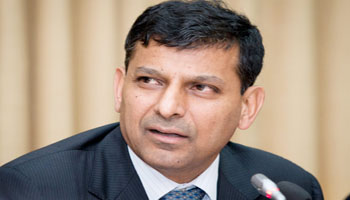Delivering the Mahtab Memorial Lecture at Bhubaneswar on May 21, 2016, Dr. Raghuram Rajan, Governor, Reserve Bank of India emphasised that even though policies in the rest of the world could enhance uncertainty and volatility for emerging markets like India, because of measures taken by the government and the central bank since the “taper tantrum” in summer of 2013, India was much better prepared for global volatility.
Among the key points he made were:
The world is growing extremely slowly, and while the reasons for slow growth differ between countries, there were probably some common factors.
As a result, the decoupling of growth between industrial countries and emerging markets was probably illusory.
While final demand in industrialised countries was boosted by debt pre-crisis, which was subsequently held back by deleveraging, emerging markets needed to change their export led models because industrial countries no longer bought their goods in such large quantities. Further, the effects of ageing in industrial countries on savings and investments were poorly understood, as were reasons for the slowdown in productivity. This again makes it hard for countries to determine the right policies to boost demand.
Structural reforms to boost potential growth in industrial countries are probably still useful – for example, reforms increasing competition in services as well as reforms increasing the flexibility of labour markets — but they are politically difficult.
Easy and unconventional monetary policy in industrial countries could increasingly be a part of the problem. For example, it could contribute to low productivity by allowing inefficient companies to continue in business. This may also depress new entry and investment by startups. At the same time, low interest rates could encourage savings as people find they need to save more to reach the amount they want for a comfortable retirement. Thus neither investment nor consumption may move up if rates are cut even further from really low levels. Furthermore, the adverse impact of capital flows, from industrial countries into emerging markets, induced by the low rates could also create volatility, which spread the slowdown to emerging markets.
Unfortunately, even if aggressive monetary policy has little positive effect, with much of even that effect coming from depreciating the currency and taking demand from other countries, central bankers in industrial countries are mandated by their monetary policy framework to keep being aggressive. The difficulty is that there is no requirement in that framework for them to behave as a responsible global citizen, as their mandate to revive the domestic economy trumps everything.
Going forward, it would be good if large central banks started thinking more internationally. To give them an incentive to do so, we need to start discussing new rules of the monetary policy game in the international setting.
These new rules will take time to develop, perhaps even decades. In the meantime, emerging markets like India should focus on macro stabilisation, building buffers and reducing vulnerabilities. “Good policy is the first line of defence – including our focus on controlling fiscal deficits, reforms like the Bankruptcy Code and Aadhaar, and our steady fight against inflation”.
To limit external vulnerabilities, India is also taking measures to control inflows, intervening in the foreign exchange market as a macro prudential measure to reduce volatility, and maintaining sufficient foreign exchange reserves to be able to withstand a sudden stop in capital inflows.
Given great uncertainty about outlook and policies of others in these times, a country like India should try to take sensible measures without getting too ambitious, as we have done so far. This will serve as a sound basis for strong and sustainable Indian growth as the world economy picks up.












































